Attracting some 20 million visitors a year, the Hungarian capital of Budapest is one of the most popular tourist destinations in Europe. Straddling the mighty Danube River (at its most beautiful here), it’s a city of culture & nightlife, a city of history & impressive architecture ranging from baroque, neo-classical, art nouveau and beyond, remnants from eras long since passed. My second visit to the city in March 2014, 16 years after my first visit, turned out to be quite the photographic treat, especially after dark when the city’s main architectural gems are well illuminated.
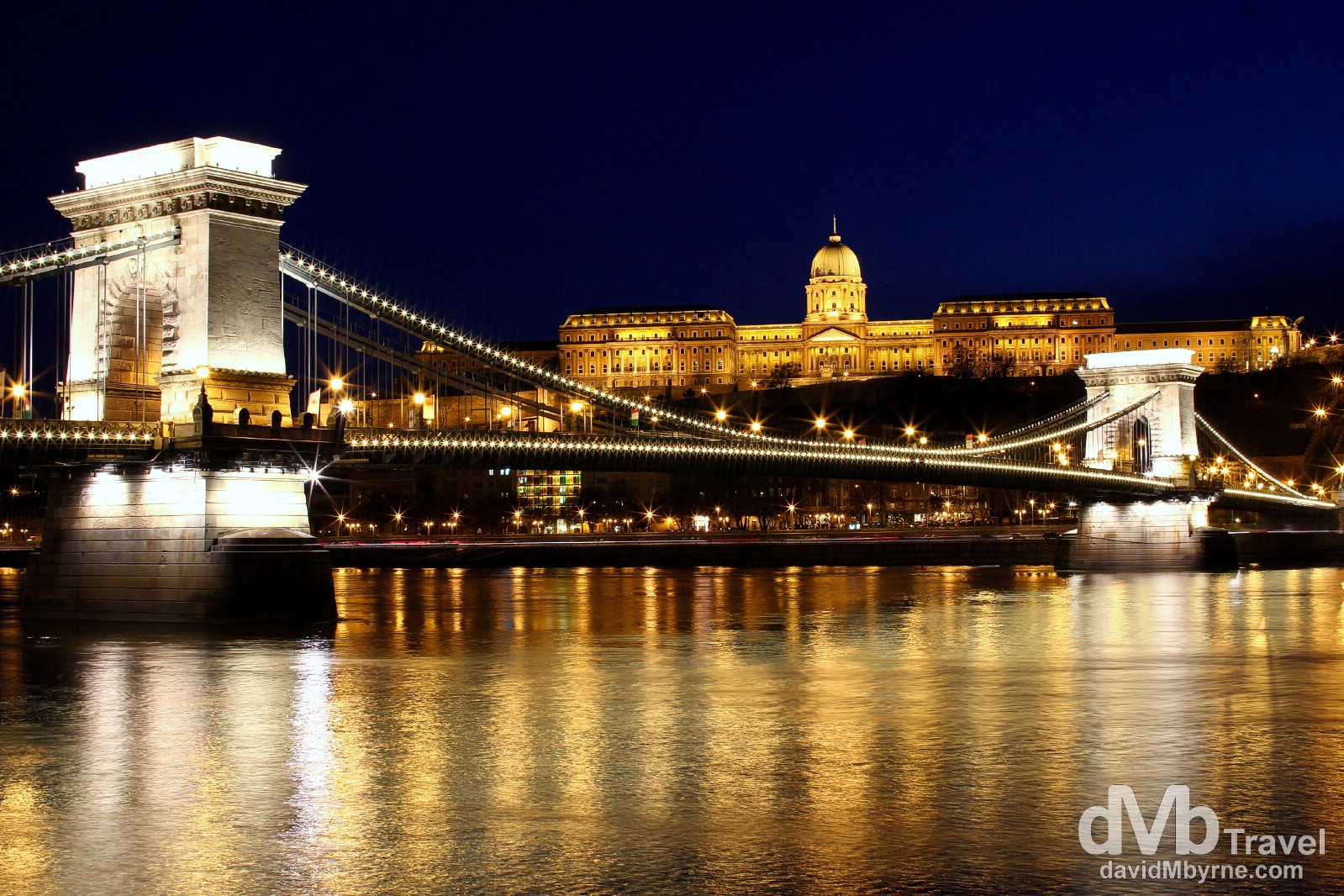
The Royal Palace in Buda & the Chain Bridge spanning the Danube as seen from the riverfront in Pest. The wrought iron & stone Széchenyi Chain Bridge, named after a major supporter of its construction, was opened in 1849 at which time it was regarded as one of the modern world’s engineering wonders. The iconic structure was the first permanent bridge spanning the Danube in Hungary. It was severely damaged during World War II and rebuilt to its present form in 1949. The Royal Palace, officially called Buda Castle, is a massive castle and palace complex perched on the southern tip of Buda’s Castle Hill overlooking the Danube. First completed in 1265, it was the official residence for Hungarian kings and today serves as the centerpiece of UNESCO World Heritage listed Budapest, including the Banks of the Danube, the Buda Castle Quarter and Andrássy Avenue. Budapest (![]() ), Hungary, March 25, 2014.
), Hungary, March 25, 2014.
– UNESCO commenting on Budapest, including the Banks of the Danube, the Buda Castle Quarter and Andrássy Avenue
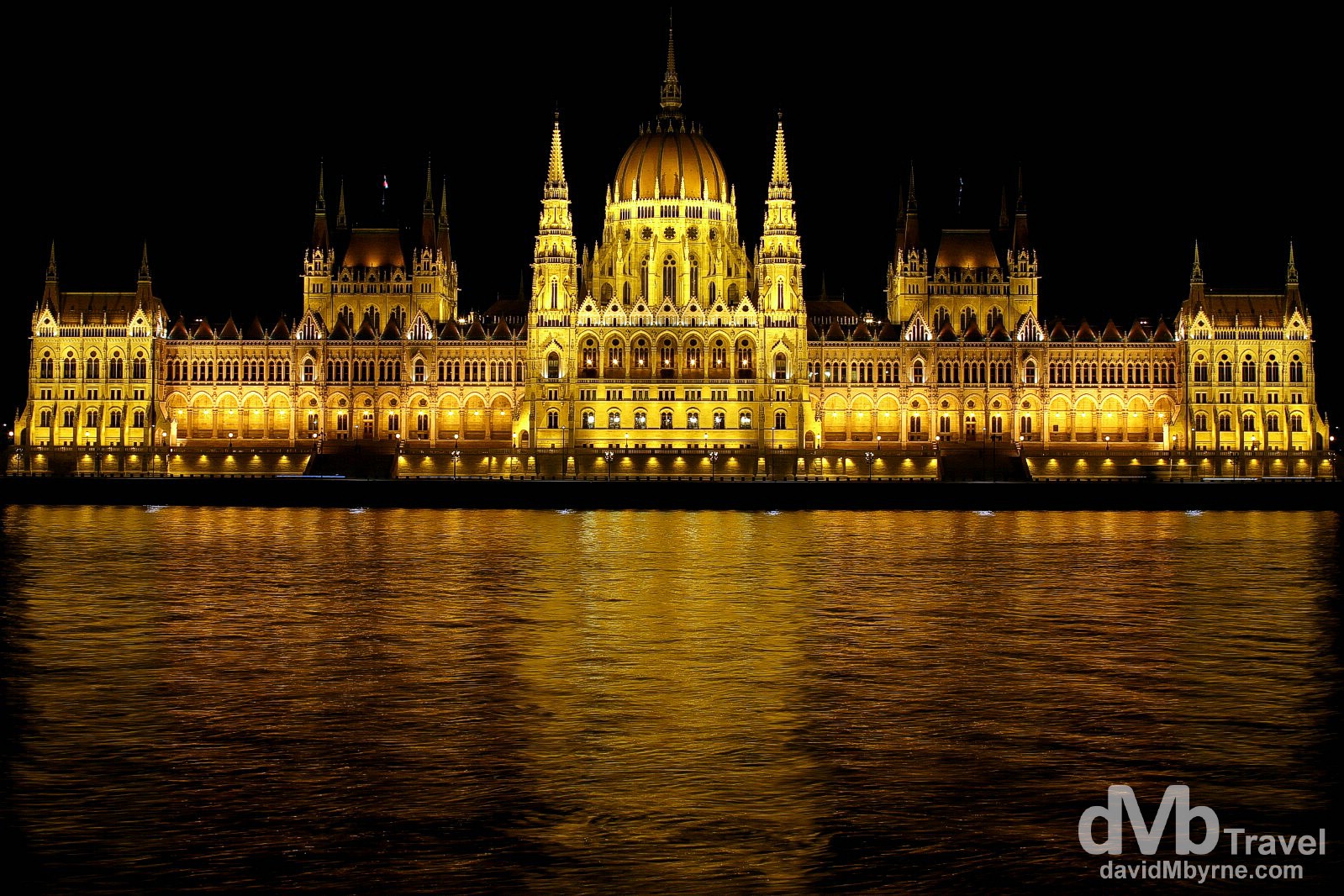
The Hungarian Parliament Building, one of Europe’s most fabulous buildings, on the banks of the River Danube as seen from the riverfront in Buda. Toiled on by a workforce of more than a thousand, it was constructed between 1885 & 1904. The Gothic behemoth, only a small portion of which is used today by the Hungarian Government, is currently the largest building in Hungary and still the tallest building in the city of Budapest – the 268 metre long main facade fronting the Danube is symmetrical with a 96 metre high central dome, the building’s most striking feature. A guided tour to ogle at ornamental opulence of some of the buildings almost 700 rooms is one of the city’s biggest must-dos. Budapest, Hungary, March 25, 2014.
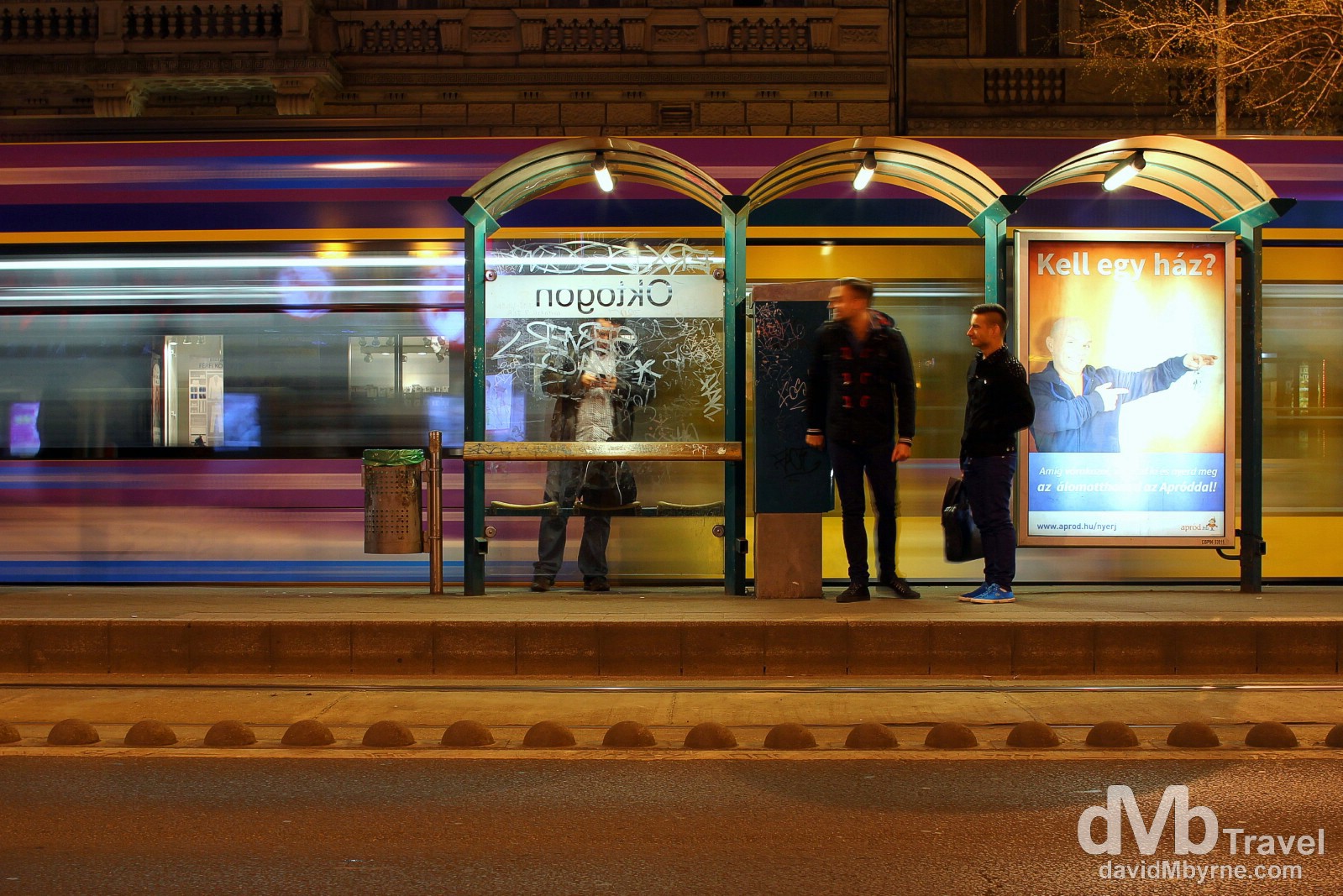
Waiting for the tram on Terez Boulevard. Operating since 1866, the Budapest tram network is one of the world’s oldest and largest public transport networks. The 33 line system serves as the backbone of the city’s transit system carrying some 100 million people a year more than the city’s subway system. Budapest, Hungary. March 25th, 2014.
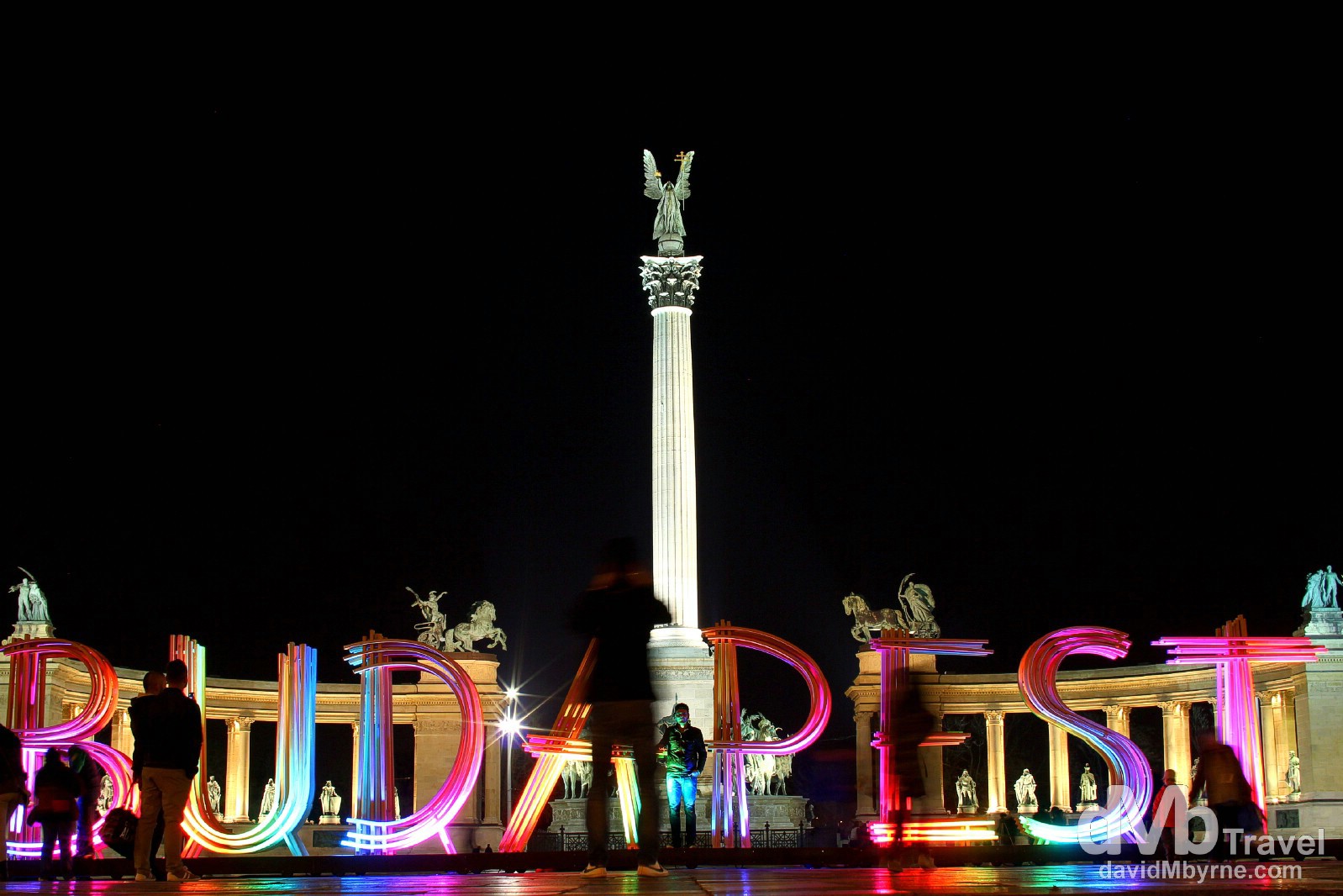
Hosök tere, known in English as Heroes’ Square, is one of the city’s major squares & location for public gatherings. Construction of the square began in 1896 to commemorate the thousandth anniversary of the foundation of the Hungarian state by St. Stephen I in 896, and was part of a much larger construction project which also included the construction of the city’s first metro line. Construction was completed in 1900, which was when the square received its name. While the large Budapest lettering seen here is not a permanent feature of the square, the large Millennium Memorial seen in the background is, Indeed it’s the square’s central feature, as well as a landmark of Budapest. The rear of the memorial consists of two massive matching curved colonnades, each with seven statues representing great figures of Hungarian history. It is fronted by a large stone cenotaph dedicated “To the memory of the heroes who gave their lives for the freedom of our people and our national independence.” The cenotaph’s slender column is topped by a statue of the archangel Gabriel. In his right hand the angel holds the Holy Crown of St. Stephen (Istvan), the first king of Hungary. In his left hand the angel holds a two barred apostolic cross, a symbol awarded to St. Stephen by the Pope in recognition of his efforts to convert Hungary to Christianity. Heroes’ Square, Budapest, Hungary. March 26th, 2014.
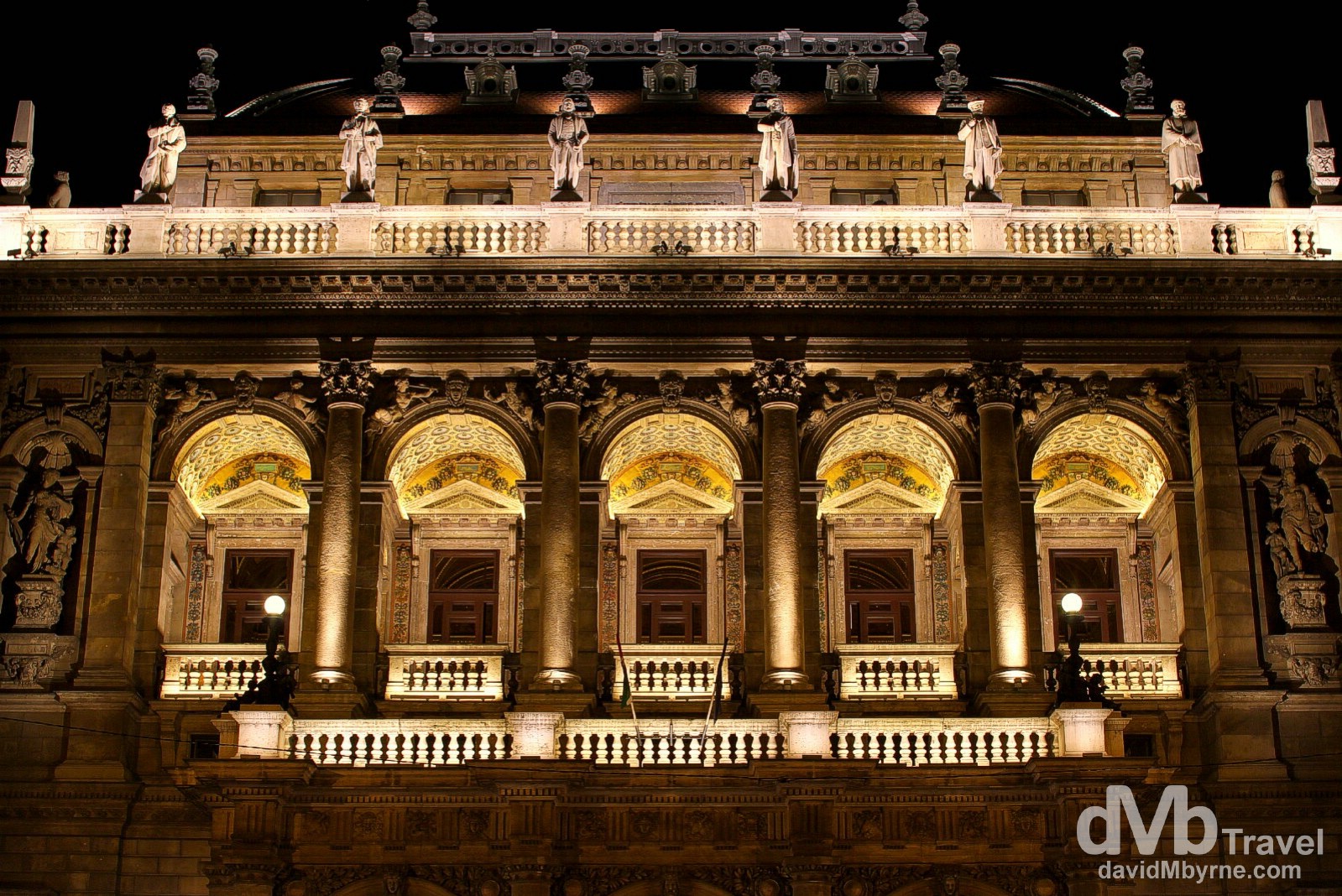
A section of the facade of the Hungarian State Opera House in Budapest. Built between 1875 & 1884 in the neo-Renaissance style, the richly decorated building is considered one the finest opera houses in the world boasting as it does superb acoustics. Guided tours of the stunningly opulent marble-heavy interior, including the horseshoe shaped main auditorium which has a capacity to hold over 1200 patrons, is another popular Budapest must-do. Budapest, Hungary. March 26, 2014.
______________________________________________________________________
